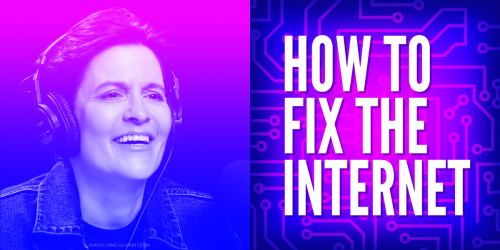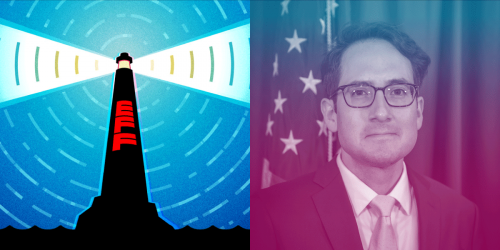The California Advanced Services Fund (CASF), a program launched in 2008 to connect all Californians to high-speed Internet, was an early success. It helped build middle mile open access fiber to hard-to-serve communities and delivered high-speed access to areas that never had Internet. It funded fiber-to-the-home to public housing, ensuring low income users had the same high-speed access that wealthy neighborhoods had. And it was rapidly closing the digital divide that low income urban and rural Californians faced, due to years of neglect from incumbent Internet Service Providers (ISPs). But CASF’s success inevitably led to its undoing—by drawing attention from lobbyists for AT&T, Frontier, and Comcast, who pushed through laws that effectively shut the program down.
After all, if the government has evidence that it can effectively tackle the lack of access to high-speed Internet as an infrastructure problem and make progress, then people won’t be waiting on incumbent ISPs like AT&T, Frontier, and Comcast. Fearing competition and substitution, these ISPs have regularly gone to Sacramento to pass laws under the false promise that less government involvement will help expand broadband access. Yet the evidence is overwhelmingly clear that the Sacramento ISP lobby has actually done nothing more than ensure most Californians have only one choice of provider, and ensured that the state has no broadband plan while our international competitors march aggressively towards a gigabit fiber future. But there have been recent victories to reverse this trend, including: restoring the California Public Utilities Commission’s regulatory authority over broadband companies, the state’s passage of the strongest net neutrality law in the land (that is still facing litigation from the ISPs), and California Governor Gavin Newsom’s Call for a Broadband For All Plan.
Why Does California’s Broadband Fund No Longer Work and Why the Law Needs to Change to Fix it
In 2017, California’s legislature passed AB 1665. This law lowered the standards of what the state would finance, banned middle-mile open access fiber projects, and established that a “served market” must have a broadband connection of at least 6 mbps/1 mbps broadband. This was a huge step backward. For context, the EU adopted its gigabit society initiative and plans for universal 100 mbps a year prior. Making matters worse, in 2016 the legislature passed SB 745, which eliminated CASF’s ability to support for public housing if they have DSL. (As of time of publication, no one has applied for this funding since SB 745’s passage.) These bills had strong support from incumbent ISPs. The amendments they supported have prevented California’s government from spending money in building fiber networks as a means to extend legacy DSL.
By establishing an abysmally low standard based on DSL technology that made its debut more than a decade ago, the state’s regulator is forced to conclude that basically everyone has useful broadband access today. This has kept the state from closing the digital divide. It’s blocked the state from spending more than $200 million of available funding because so many people have access to legacy DSL that comes from the old AT&T monopoly copper line. In other words, the CPUC remains shackled from doing anything proactive, such as finance fiber-to-the-home in rural markets or invest in open access fiber in ignored low-income communities.
Fixing the Law is Simple, Update the Standard to Focus on a Fiber Future
EFF’s research into last-mile networks has made it abundantly clear that fiber is the only data transmission medium today capable of scaling with consumption for decades to come. Fiber networks are so vastly superior in their capacity to upgrade when compared with DSL, cable, and even 5G wireless, that it is of no surprise that other countries are aggressively rolling out universal fiber networs. In fact, while the United States was on par with China when it came to fiber to the home deployment seven years ago, China has built fiber networks nine times faster than the United States in the following years. As a result, China will soon reach universal fiber status, joining South Korea and Japan in the multi-gigabit era of broadband. And improvements extend beyond wired connections—a universal fiber network also means a national 5G high-speed wireless network can ride on top of the fiber as well as any high-speed wireless application needs fiber infrastructure.
The California legislature needs to fix CASF and convert it into a fiber infrastructure fund focused on upgrading Californian communities into the 21st century. To do so, the legislature needs to amend the broadband standard for eligible projects to 100 mbps download by 100 mbps upload with low latency and establish that as the new goal by deleting the DSL standard. This 100 mbps/100 mbps low latency broadband minimum for funding applicants would finance the next generation of fiber-to-the-home networks and high-speed wireless broadband, which is dependent on fiber capacity to cellular towers. Given the extreme capacity that fiber networks can bring to a community, legislation should require that any recipient of state funding operate under an open access regime, to make sure that other private and public providers can obtain capacity. This change would guarantee new publicly supported fiber infrastructure that could also be used to provide 5G and future advanced wireless services, and open up California’s markets to more competition—a win-win for consumers.













